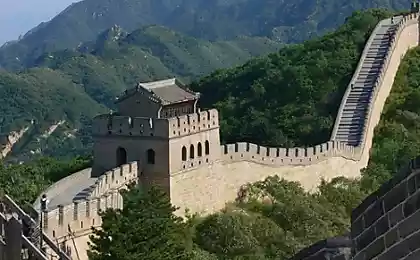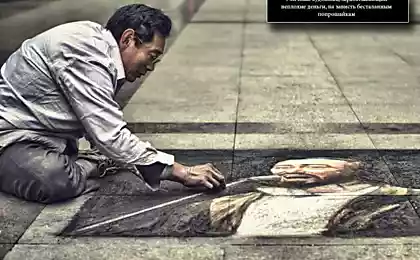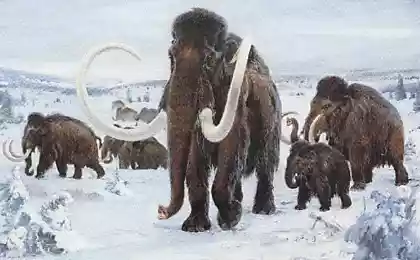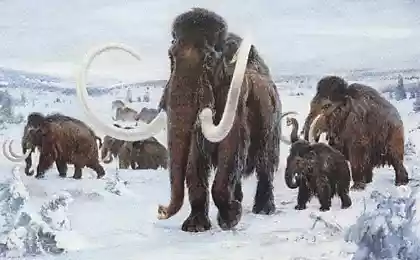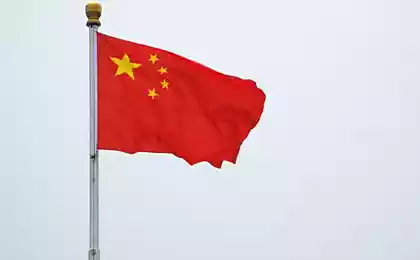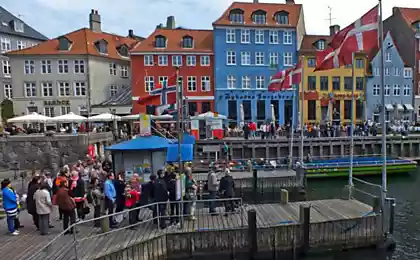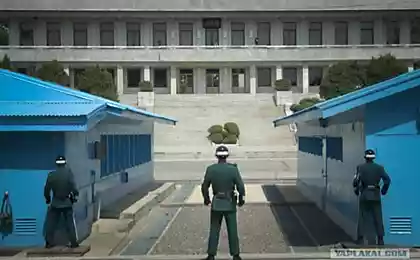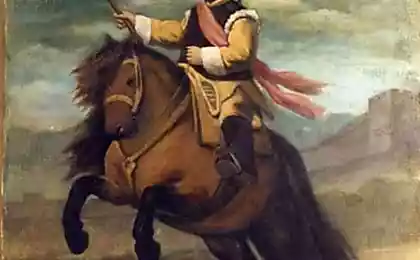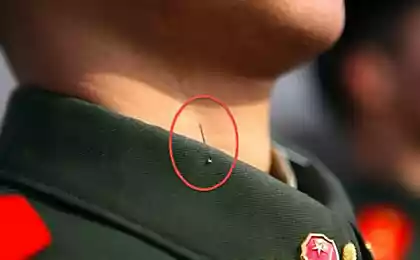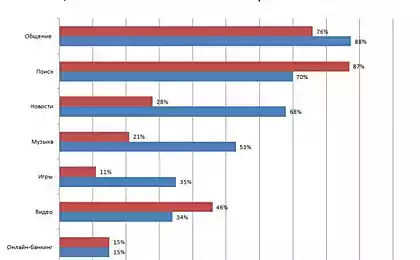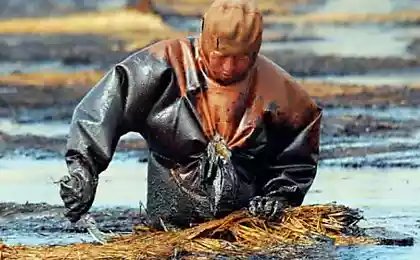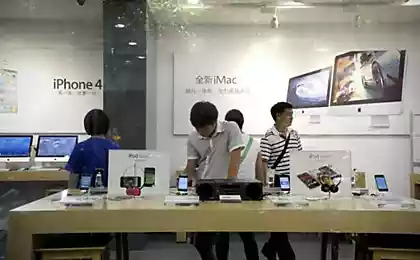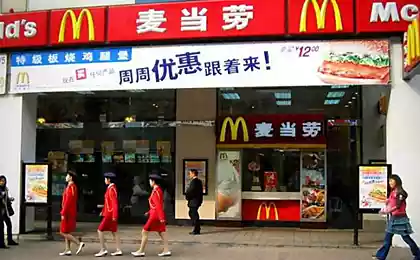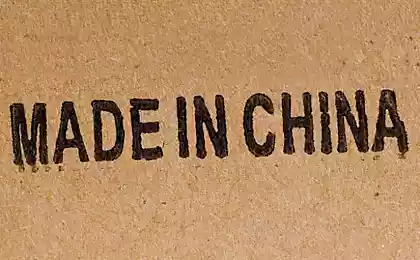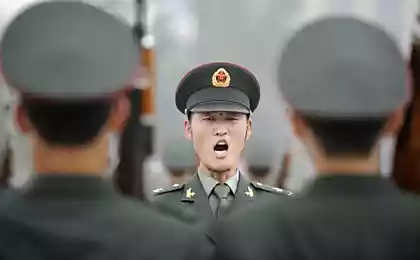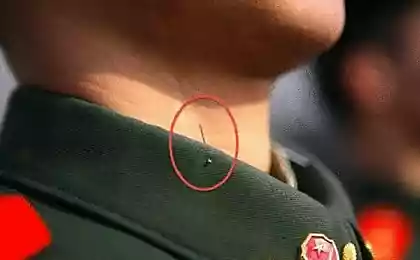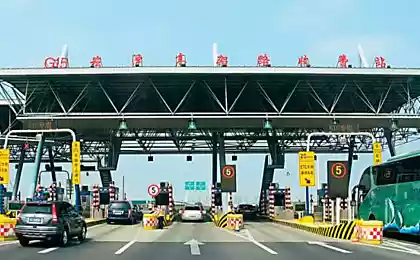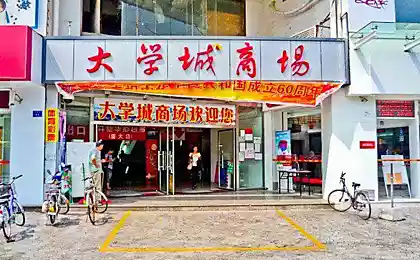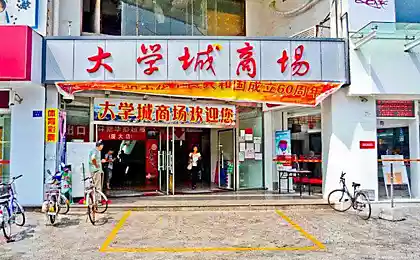954
20 years ago in China (22 photos)
The unrest began in Beijing on April 15, 1989 after the death of the former General Secretary Hu Yaobang, very popular in China policy, a supporter of liberal reforms, openly despised "Maoist excesses".
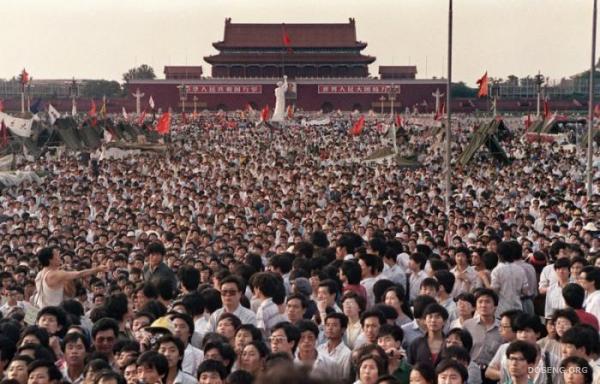
Students gathered to honor his memory and to demand removal from charges of anti-state activities. Very soon I added to these requirements protest against corruption, high prices, social stratification between the SEZ (Special Economic Zones) and the rest of the country. The unrest became widespread. People, despite the demands of the authorities refused to voluntarily leave the area. The protests began to settle in other cities, in particular in Xi'an and Changsha.
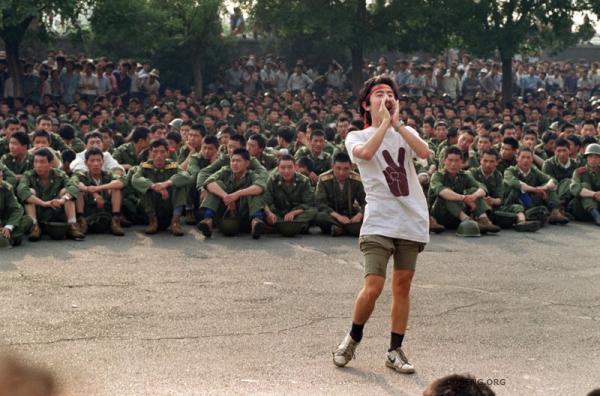
In his report to the NPC Standing Committee meeting of 30 June 1989 Beijing Mayor Chen Situn calls the main reason for the beginning of appearances mass fabrication of "a handful of organizers of disorders" rumors in order to "demagogic impact on people and incite the masses." In his version, "at the beginning of student protests he was dismissed a rumor that Li Peng at a meeting of the Politburo reportedly cursed Hu Yaobang and he died, unable to bear the insults." Then Chen Situn accuses the liberal Zhao Ziyang, the enemy's use of the audience in the square force, "conciliatory and permissive attitude toward the events».
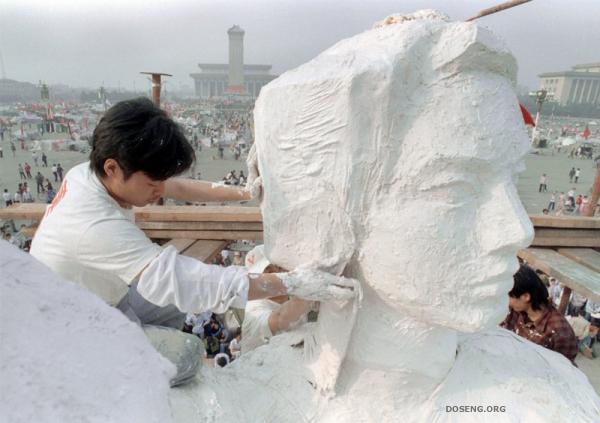
The protests continued for five weeks. Besides Beijing, the performances took place in Shanghai, and Wuhan Chonkin.
The demonstrations caused a split in the leadership. CPC Chairman Zhao Ziyang, who was called "Chinese Gorbachev", spoke to the students, urging them to disperse and promised to reform. The conservative majority in the Politburo to remove him from power and placed under house arrest (where he spent the last 15 years of his life) and has decided to use force.
According to numerous witnesses, the army acted with extreme brutality: unarmed people crushed by tanks, shot on the spot, stabbed with bayonets. Number of victims of the Chinese government still keeps a secret. According to various estimates, it ranges from 400 to 2,600. 7-10 thousand people were injured and the injury.
For several days in Beijing and other cities were mass arrests. The whole world saw footage of Chinese soldiers, strolled along the ranks of young people set out on his knees with his hands behind his back. A number of protesters were sentenced to death or long prison terms.
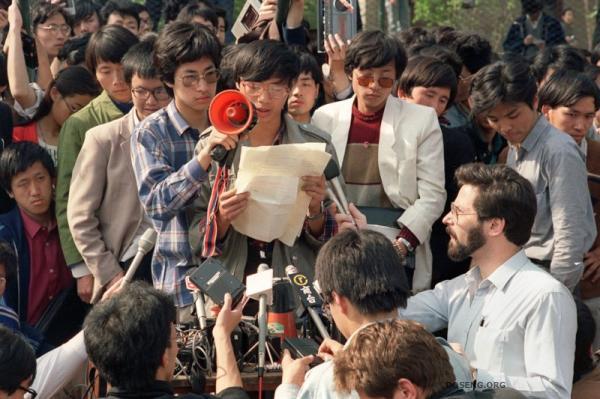
The West imposed sanctions against China, which soon enough were canceled. In the USSR, the Beijing event discussed mainly under the foreshortening of the Communist Party there would be able to "Soviet Tiananmen».
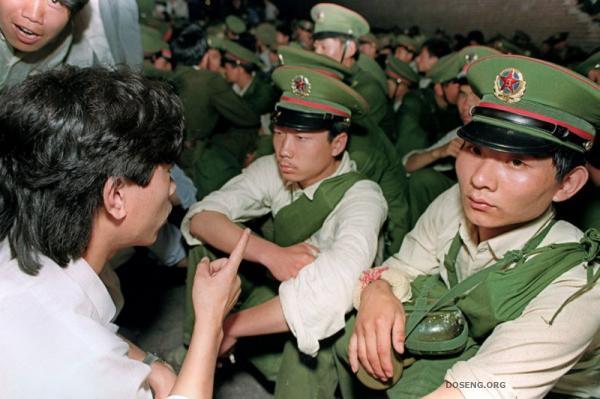
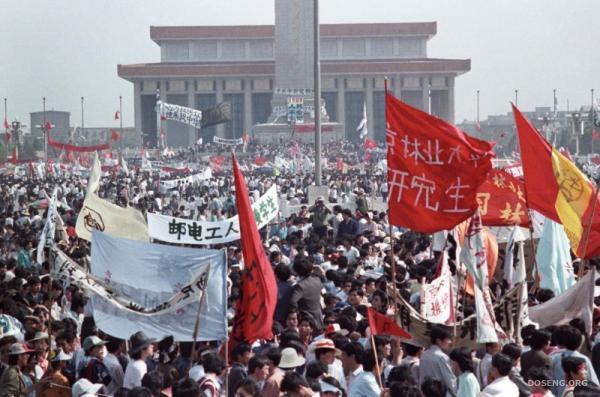
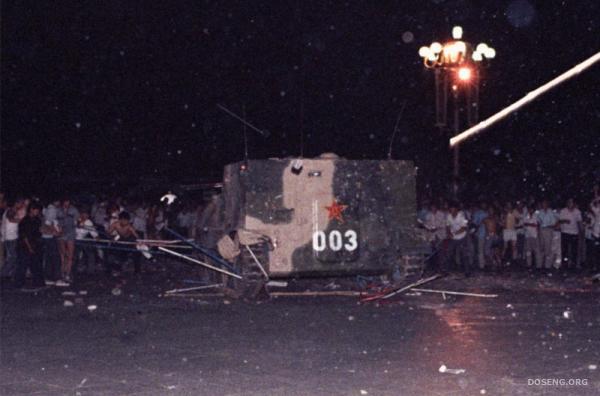
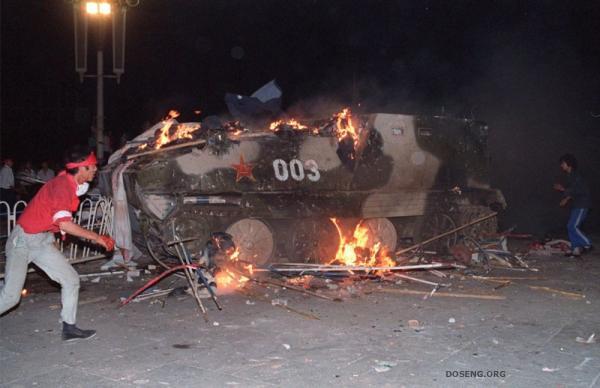
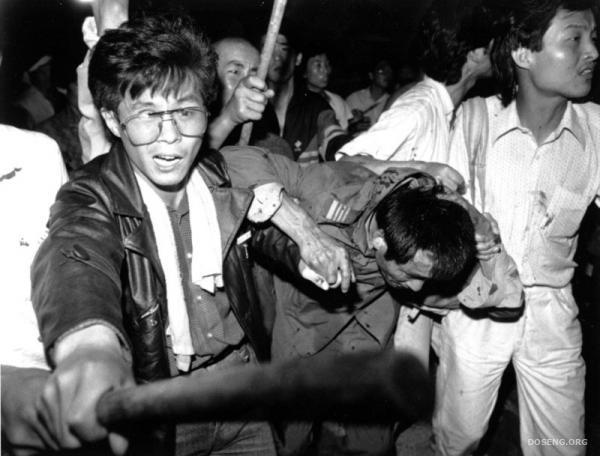
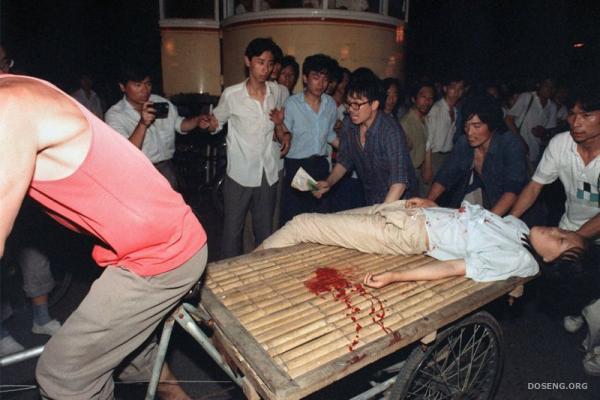
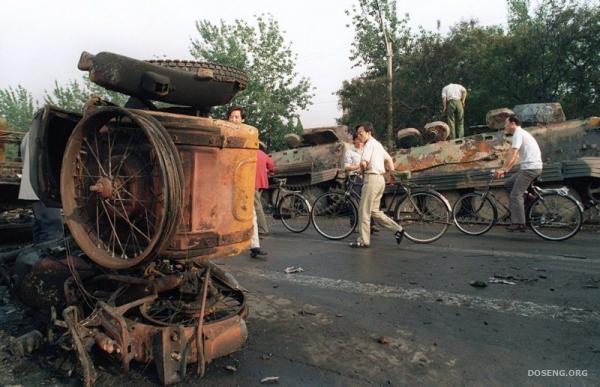
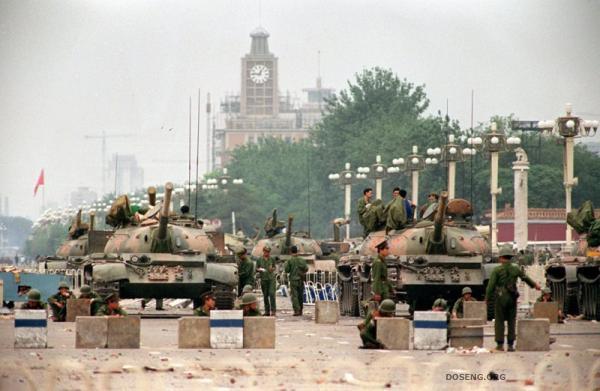
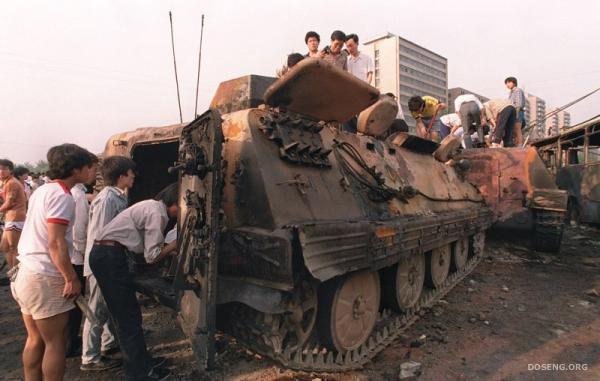
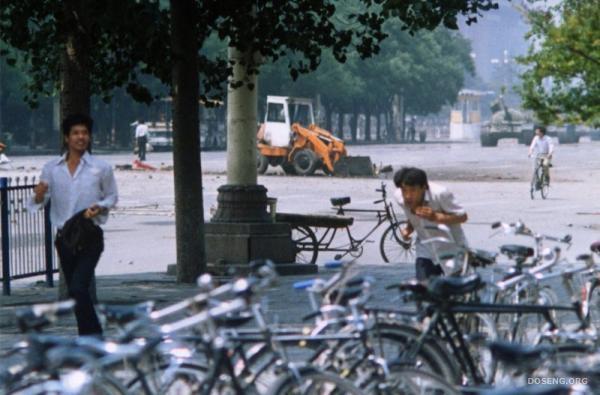
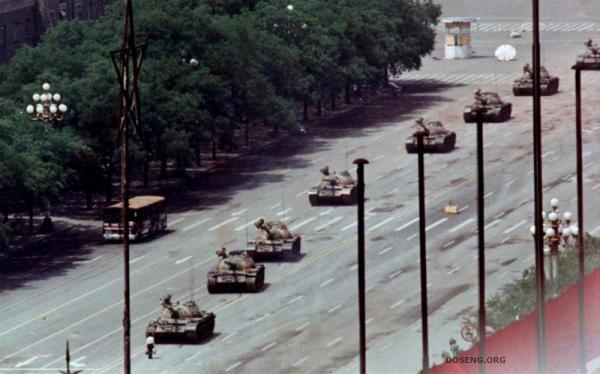
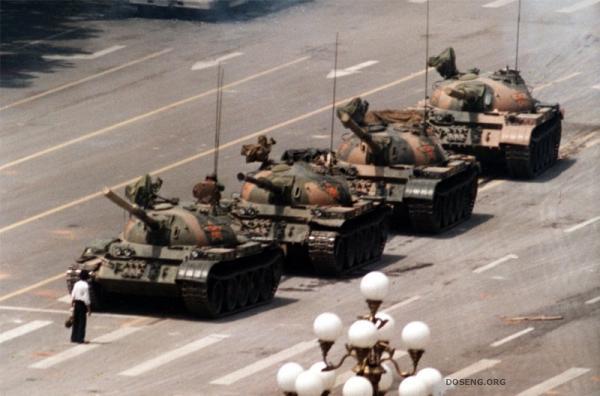
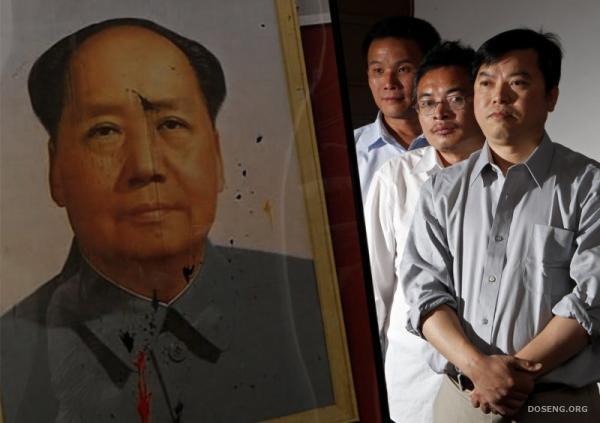
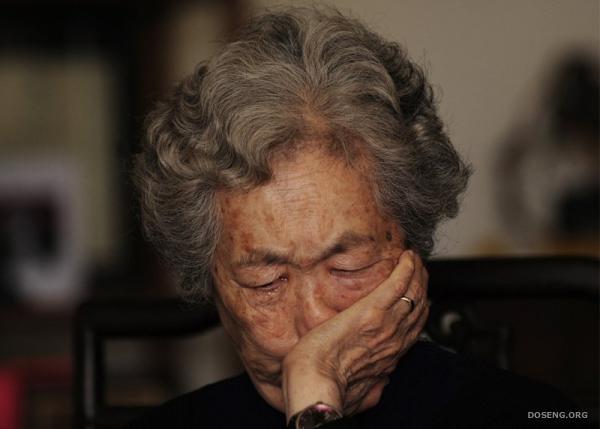
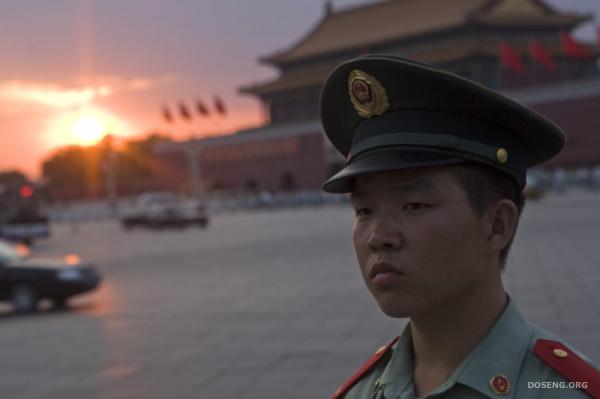
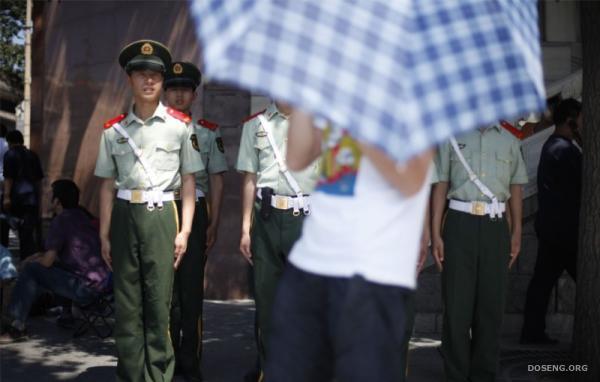
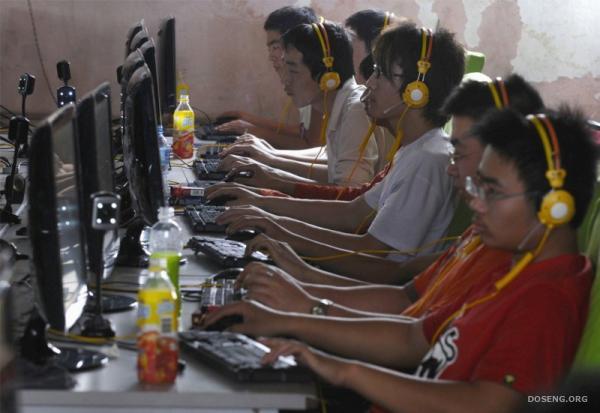

Students gathered to honor his memory and to demand removal from charges of anti-state activities. Very soon I added to these requirements protest against corruption, high prices, social stratification between the SEZ (Special Economic Zones) and the rest of the country. The unrest became widespread. People, despite the demands of the authorities refused to voluntarily leave the area. The protests began to settle in other cities, in particular in Xi'an and Changsha.

In his report to the NPC Standing Committee meeting of 30 June 1989 Beijing Mayor Chen Situn calls the main reason for the beginning of appearances mass fabrication of "a handful of organizers of disorders" rumors in order to "demagogic impact on people and incite the masses." In his version, "at the beginning of student protests he was dismissed a rumor that Li Peng at a meeting of the Politburo reportedly cursed Hu Yaobang and he died, unable to bear the insults." Then Chen Situn accuses the liberal Zhao Ziyang, the enemy's use of the audience in the square force, "conciliatory and permissive attitude toward the events».

The protests continued for five weeks. Besides Beijing, the performances took place in Shanghai, and Wuhan Chonkin.
The demonstrations caused a split in the leadership. CPC Chairman Zhao Ziyang, who was called "Chinese Gorbachev", spoke to the students, urging them to disperse and promised to reform. The conservative majority in the Politburo to remove him from power and placed under house arrest (where he spent the last 15 years of his life) and has decided to use force.
According to numerous witnesses, the army acted with extreme brutality: unarmed people crushed by tanks, shot on the spot, stabbed with bayonets. Number of victims of the Chinese government still keeps a secret. According to various estimates, it ranges from 400 to 2,600. 7-10 thousand people were injured and the injury.
For several days in Beijing and other cities were mass arrests. The whole world saw footage of Chinese soldiers, strolled along the ranks of young people set out on his knees with his hands behind his back. A number of protesters were sentenced to death or long prison terms.

The West imposed sanctions against China, which soon enough were canceled. In the USSR, the Beijing event discussed mainly under the foreshortening of the Communist Party there would be able to "Soviet Tiananmen».

















